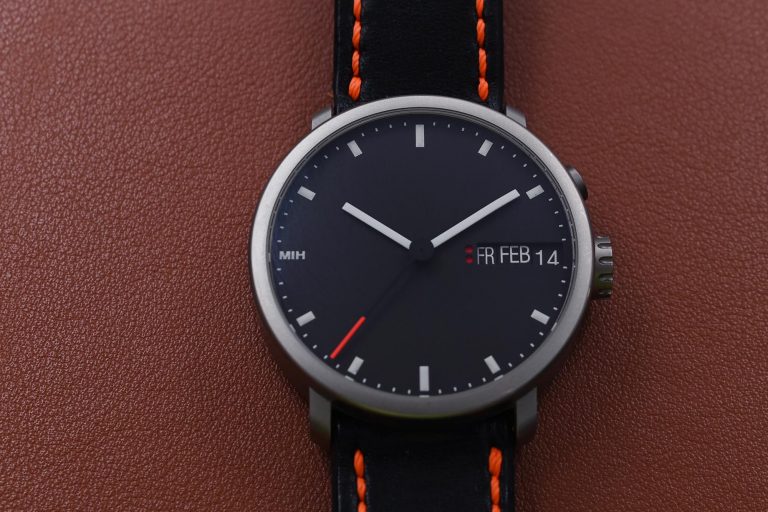There are some watches that one only discovers when one gets deeper into horology.
After going past the obvious mainstream brands, tackling the icons, and even getting to grips with various dazzling complications, the path that all watch neophytes are wont to wander down invariably leads to watches that seem so amazing that one is instantly blinded by lust. One such watch that can emerge from the rabbit hole of the internet is the MIH watch, a piece that I am sure has held many in its grip for being what is surely on paper, a watch nerd’s wet dream.
One such watch that can emerge from the rabbit hole of the internet is the MIH watch, a piece that I am sure has held many in its grip for being what is surely on paper, a watch nerd’s wet dream.
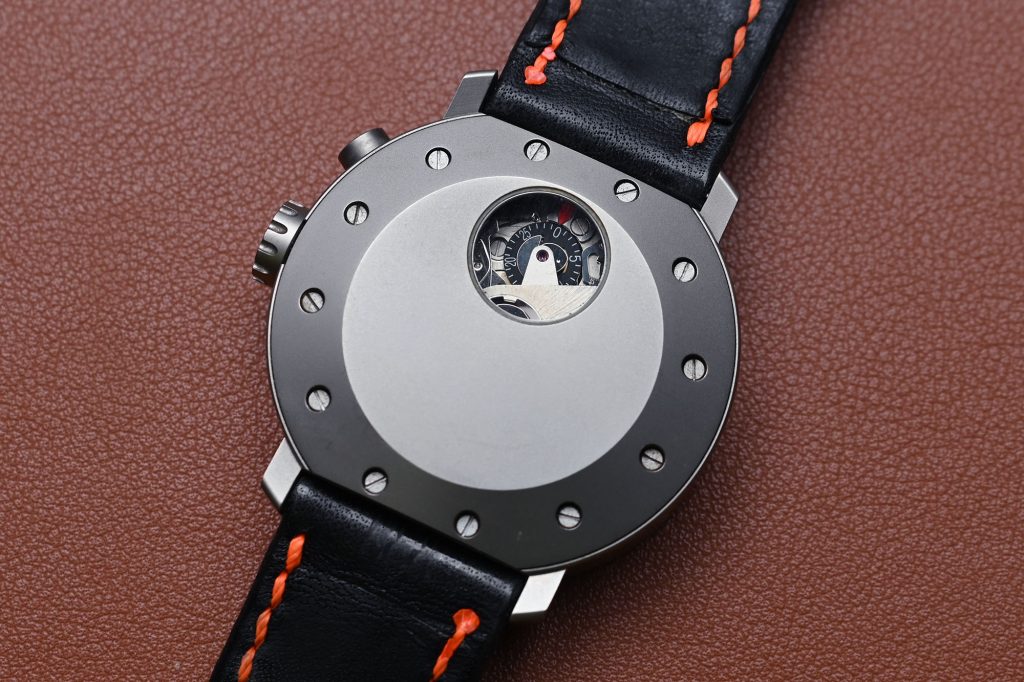
Why? How about a minimalist dial design combined with the comparatively rare annual calendar complication (requiring the setting of the date only once a year in February), and then, a 30 minute monopusher chronograph, wrapped up in a 42mm wide titanium case? Add to that the pedigree of its creators – Ludwig Oechslin of Ulysee Nardin fame, and world class movement specialist Paul Gerber. Then when you consider the wellspring of watchmaking content on offer in relation to its price of 6000 CHF, and you have enough in the watch to satisfy even the most discerning collector.
The MIH watch was conceived as a fundraising project for the Musée International d‘Horlogerie (MIH) in 2005 by Ludwig Oechslin when he was the curator, which accounts for its name, with 700 CHF from the sale of each watch going to the operating costs of the museum. The lust for this watch is real, yet the journey for most collectors often stops quickly because it is difficult to find. It rarely comes up on the pre-owned market, and the MIH no longer sells it.
The lust for this watch is real, yet the journey for most collectors often stops quickly because it is difficult to find. It rarely comes up on the pre-owned market, and the MIH no longer sells it.
How do I know all this? Because I was one of those who wanted to buy one for many years after finding out about it, and going through the handful of articles online about it. Since then, it had always been on my list, and I was ready to pounce if a piece did turn up for sale.
The difficulty of getting one however as I have found, was probably a good thing, because it’s often been advised that one should not meet one’s heroes for fear of disappointment. In this case, this turned out to be true after the considerable time I spent with this watch. I recently got a chance recently to borrow one from a local collector in Singapore and my conclusion from that experience is that, this watch, at least for me, was a grail that missed the mark.
All this makes my inclusion on the waiting list that was started on the 9th of September 2020 via the website (https://www.mih-watch.com/) for the coming re-edition something of a moot point. As it stands, I would be hesitant to pull the trigger on it unless this re-edition addresses some of the issues I found in my time with the watch.
So what happened?
The presentation starts well, with the minimalist look contributing to an extremely legible dial with white hands against a black background making the time easy to read. The red tipped seconds hand gives the dial some animation when it is running, and you can choose to let it run as a normal seconds hand or as part of the chronograph function.
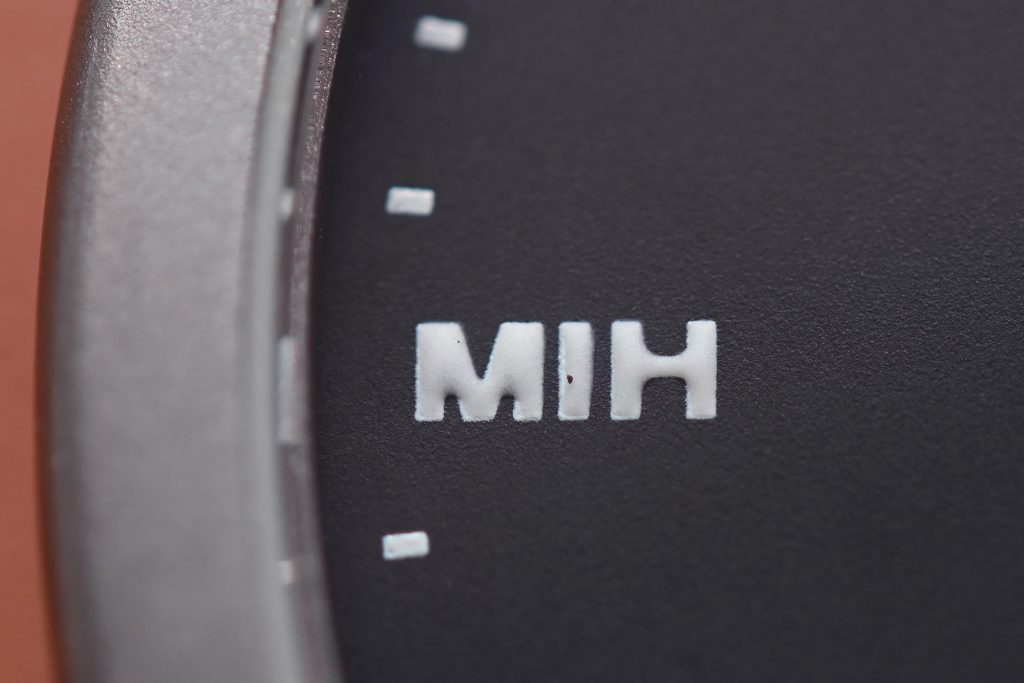
The dial comes with short luminous hour markers around the expansive black dial. A small MIH logo acts as the 9 o’clock marker which cheekily is lumed as well and from afar is roughly the same size as the other markers, making it somewhat invisible as well. Keeping the balance of the dial at the 3 o’clock position is the annual calendar function with the day, month and date displayed in a straight line, with an additional position for two red dots that act as an AM/PM indicator.

In hand the 42mm wide titanium case makes the watch light to wear and matches the titanium pin buckle, which is engraved on its underside with the GPS coordinates of the museum, a useful detail when you are trying to find it in La Chaux-de-Fonds in Switzerland should you want to go there.

Lastly, at the 2 o’clock position on the case, is the mono-pusher for the chronograph function which engages a large red tipped chronograph seconds hand. Round the back of the unmarked caseback is a window that shows the 30 minute counter for the chronograph, a smart choice which helps to minimize dial indications yet is there in the rare occasions when you need it.
So far so good then.
The annual calendar function is implemented well with a date that can be adjusted very quickly via the crown. Unlike other annual calendars that require you to cycle the time forward with the crown or by using pushers on the case to make the calendar indications go forward. It’s so fast that you can cycle past your intended date if you’re not careful, but it’s not a big issue, because it’s relatively fast to cycle it forwards to your intended date again.
Of note here is that the calendar can only be adjusted at certain hours of the day, (basically with the hands below the 3 and 9 o’clock markers) which I suppose is on account of the Valjoux 7750 movement used inside.
Next to the date is a helpful AM/PM indicator symbolized by red dots. One dot means that the time shown is AM, and two dots means that the time is PM. Why such a weird feature? Well that’s because behind the dial each day on the day wheel is marked twice, since there are only 7 days in a week, and the dial needs more spaces to make a full circle.
Which is a nice segue into the negatives that I have found in my time with the watch.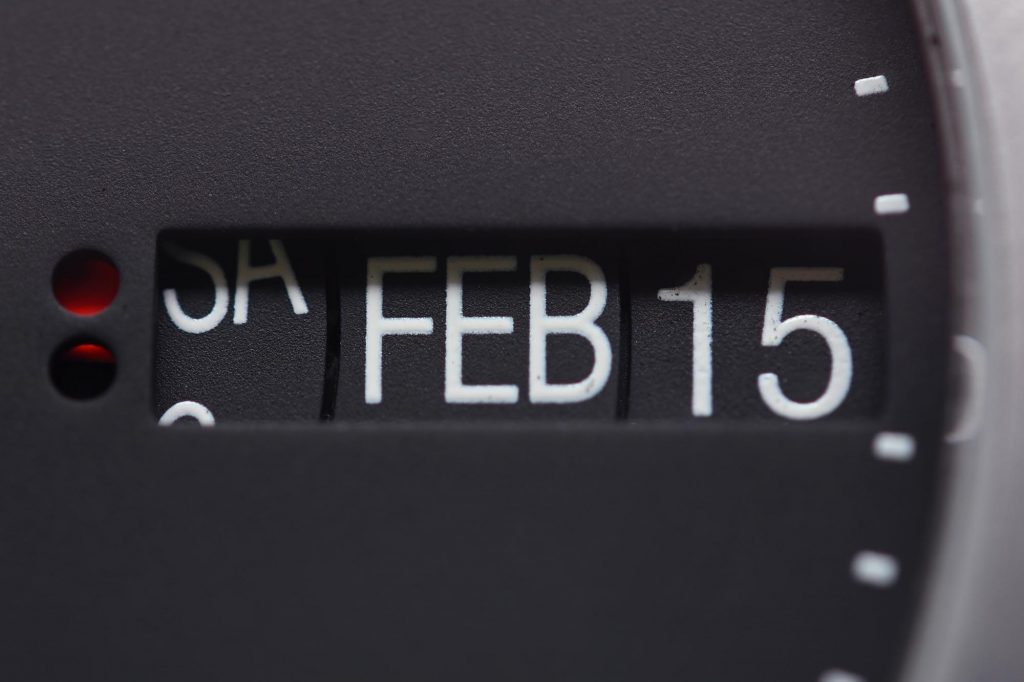 Due to the nature of the day wheel as described, it starts its slow and agonising change around noon. If it were an instant change, it would not be an issue, but here the change takes two hours, which can get a little confusing when you check your watch around lunch time and wonder why the date display is not sitting correctly. It’s a bit of a quirk that you have to remind yourself about every time you do this and since it happens between noon and 2pm, it does make lunch time gatherings with other watch collectors a little bit awkward when you have to explain it to them.
Due to the nature of the day wheel as described, it starts its slow and agonising change around noon. If it were an instant change, it would not be an issue, but here the change takes two hours, which can get a little confusing when you check your watch around lunch time and wonder why the date display is not sitting correctly. It’s a bit of a quirk that you have to remind yourself about every time you do this and since it happens between noon and 2pm, it does make lunch time gatherings with other watch collectors a little bit awkward when you have to explain it to them.
Next is the chronograph function, which on paper is a nice thing to have, and part of the advantage of using the Valjoux 7750 as the base movement.
The problem I encountered however was the chronograph seconds hand which was not able to reset to the 12 hour marker. When I received this watch, the owner explained to me that his example couldn’t reset to zero. He went on to explain that when it first happened, he had it sent back for repair. When it came back, it was fine, but the issue occurred again a few months later. Apparently it’s a common problem with this watch, as he knows two other owners who have encountered the same thing.
It’s definitely due to a flaw in the design somehow since the chronograph seconds hand and the annual calendar complication both run from the cannon pinion of the watch.
In practice you could of course mitigate the issue by letting the chronograph seconds hand run like a normal seconds hand, but it’s probably not a good idea to do this since the Valjoux 7750 runs a horizontal clutch and not a vertical clutch, plus it is irritating when a function of a watch does not work well or as advertised.
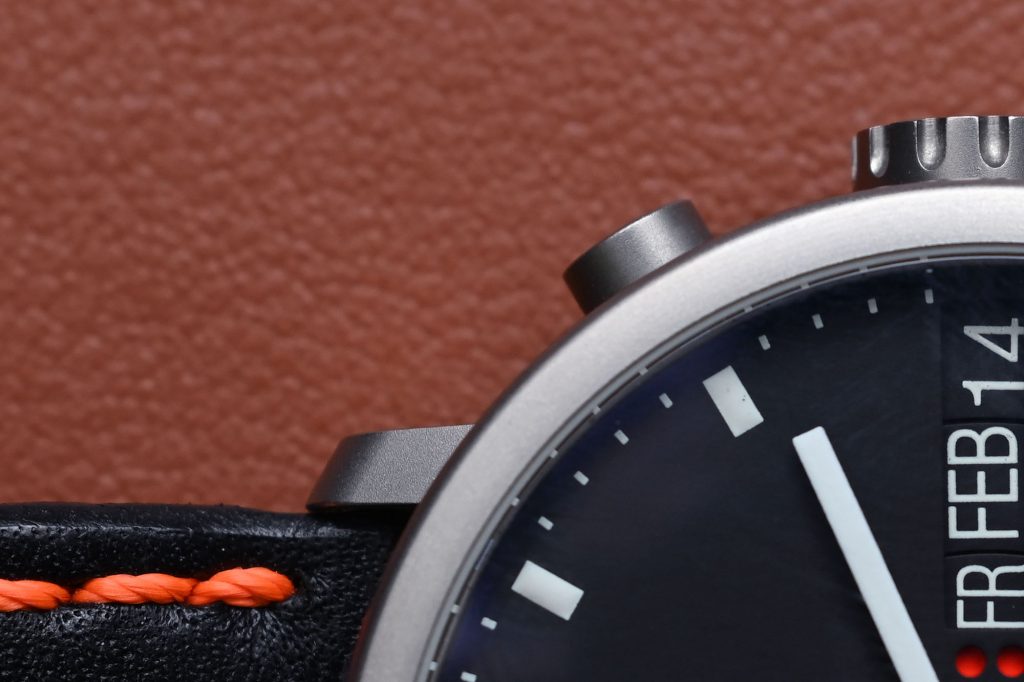
Connected to this, is also how on the wrist, the chronograph pusher is difficult to engage. It’s easier with the watch off wrist as you can center your finger to depress the pusher straight down. I believe that this is due to the design of the pusher, that doesn’t have, unlike other chronograph pusher designs, one that sits on a thinner stem, and so does not encounter any resistance when it is engaged.
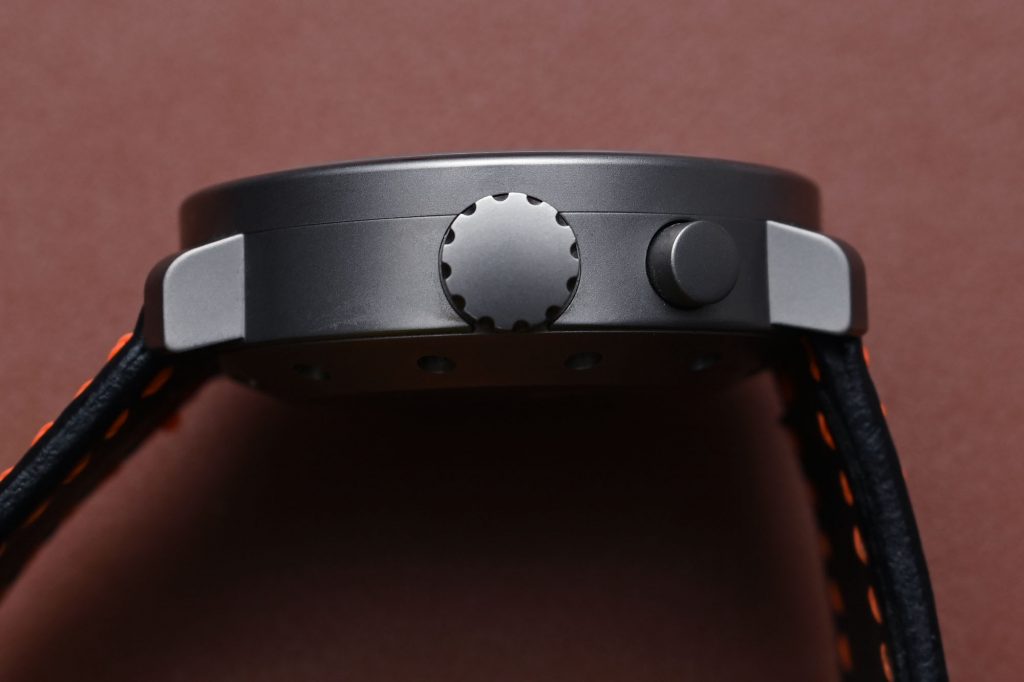
The final reason has to do with the thickness of the watch, as measured at 14.9mm. This of course is a consequence of using the Valjoux 7750 which is a thick movement, but it does make the watch feel like you’re wearing a cylinder on the wrist, and this despite the upside of the case having short lugs, which helps wearability on a wide variety of wrist sizes.
Now this is a personal thing and your mileage might vary but the thickness of the watch is a point made by many reviewers. It might feel ok if one were to encounter the watch for a short while, but worn everyday, it can be a little too much.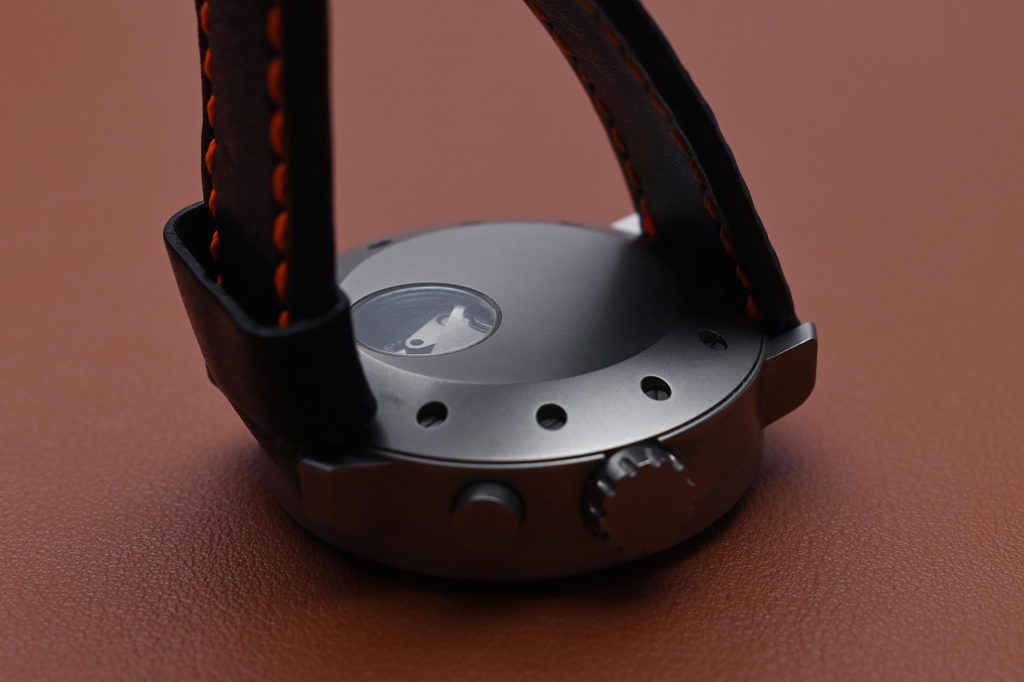 My opinion on this is that a sleek and slim profile goes better with the philosophical idea of a minimalist watch. Think of it this way, you can justify the thickness in a normal chronograph since there are plenty of things going on in the dial, but here it feels as if the bulk of the watch is incongruent to its design intention.
My opinion on this is that a sleek and slim profile goes better with the philosophical idea of a minimalist watch. Think of it this way, you can justify the thickness in a normal chronograph since there are plenty of things going on in the dial, but here it feels as if the bulk of the watch is incongruent to its design intention.
Apparently Paul Gerber had suggested the use of the Valjoux 7750 since it can deliver more torque for the calendar functions. That may be true, but I think that if it were possible to get rid of the Valjoux 7750, and the problematic chronograph, and just have an annual calendar, the result would be a thinner and more satisfying watch.
But then, you could already get what with the Ochs und Junior Annual Calendar, a watch from Ludwig Oechslin’s own brand that shares a similar design principle in its complication, albeit with a different style of date, day and month display, but then that’s a totally different watch.
What could be done about the re-edition then to make it better? Well, the unique look of the watch has to be preserved. After that it’s a matter of making the chronograph function more reliable, or failing which, get rid of the Valjoux 7750 and, use a normal time only ETA in its place for the aforementioned benefits.
Would this be done, much less considered? Perhaps the creators of the watch have also realized the same thing, and will take the opportunity to revise the watch. However what is important to me is that the glowing reviews thus far that this watch has received need to be balanced by a naysayer such as myself, who might represent the possible reaction of some who might be thinking of buying one and have the opportunity to.
So, it’s not for me, and maybe it’s not for you also.


